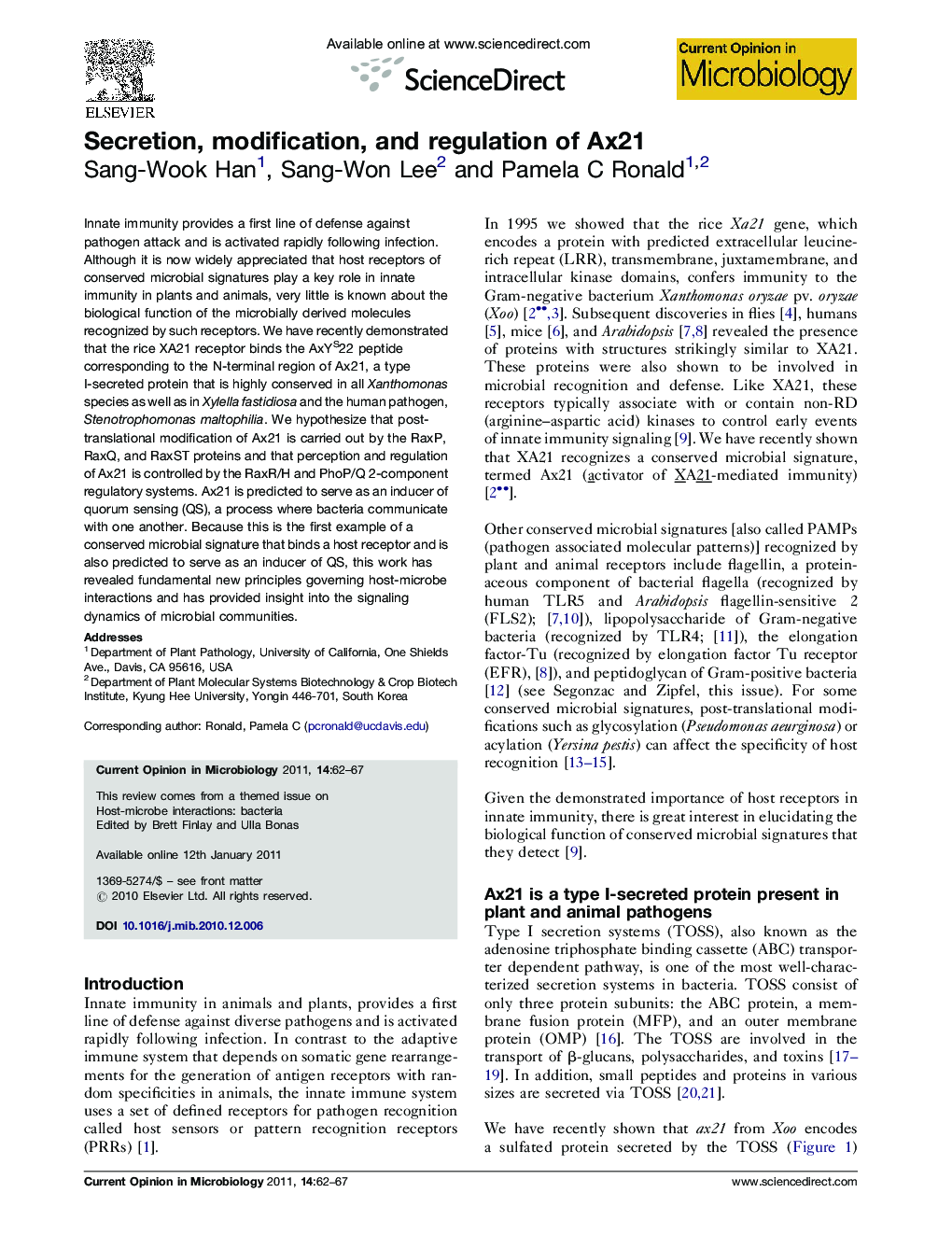| Article ID | Journal | Published Year | Pages | File Type |
|---|---|---|---|---|
| 3399104 | Current Opinion in Microbiology | 2011 | 6 Pages |
Innate immunity provides a first line of defense against pathogen attack and is activated rapidly following infection. Although it is now widely appreciated that host receptors of conserved microbial signatures play a key role in innate immunity in plants and animals, very little is known about the biological function of the microbially derived molecules recognized by such receptors. We have recently demonstrated that the rice XA21 receptor binds the AxYS22 peptide corresponding to the N-terminal region of Ax21, a type I-secreted protein that is highly conserved in all Xanthomonas species as well as in Xylella fastidiosa and the human pathogen, Stenotrophomonas maltophilia. We hypothesize that post-translational modification of Ax21 is carried out by the RaxP, RaxQ, and RaxST proteins and that perception and regulation of Ax21 is controlled by the RaxR/H and PhoP/Q 2-component regulatory systems. Ax21 is predicted to serve as an inducer of quorum sensing (QS), a process where bacteria communicate with one another. Because this is the first example of a conserved microbial signature that binds a host receptor and is also predicted to serve as an inducer of QS, this work has revealed fundamental new principles governing host-microbe interactions and has provided insight into the signaling dynamics of microbial communities.
